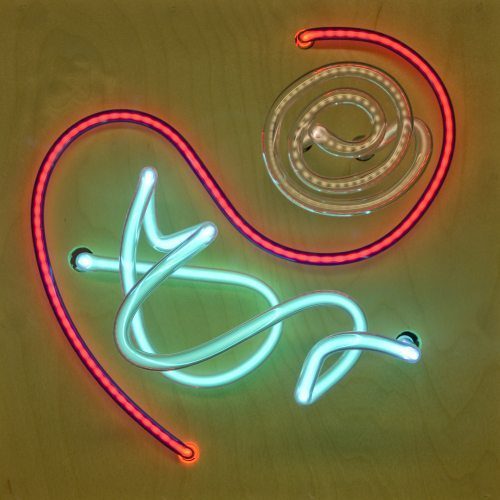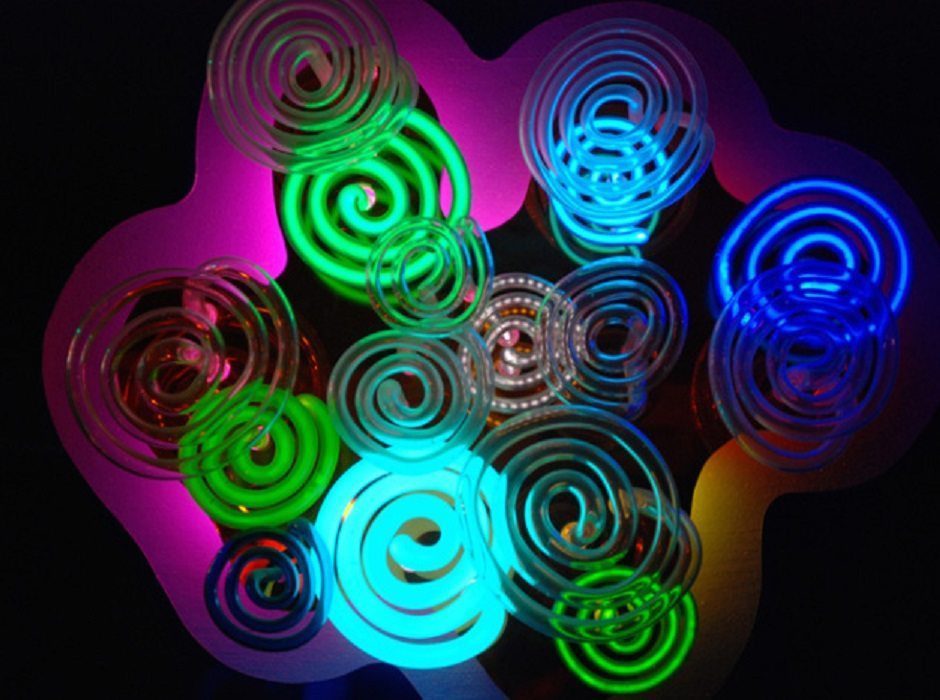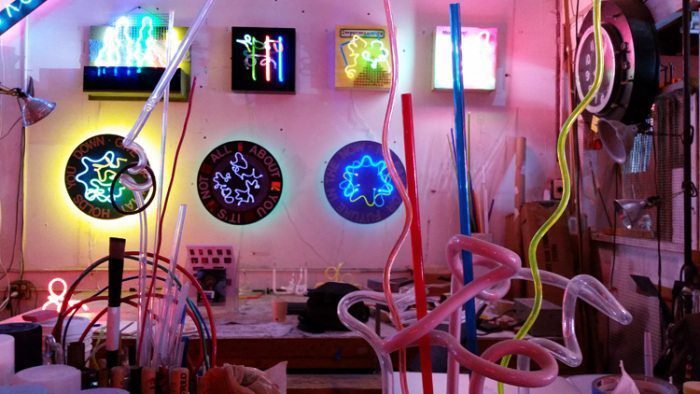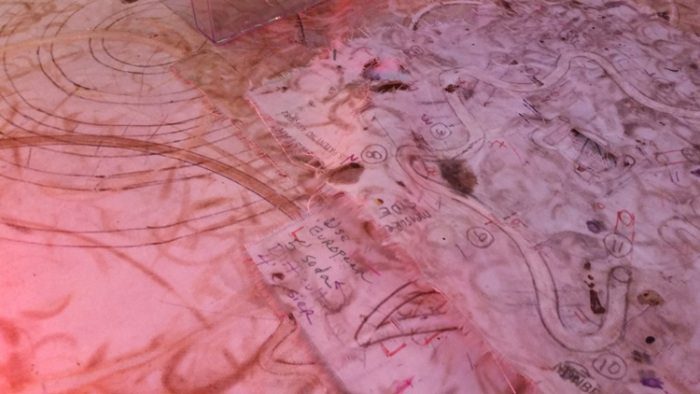‘The intense colors and glow of the motel and business signs appealed to me and I thought they were beautiful.
A visit to Las Vegas was always special because of extensive use of neon all over the buildings.’
Thus explains Southern Californian artist Linda Sue Price her love for neon tube lighting as an art medium, and the beguiling warmth of her light works evidences that affection.
Kristine Schomaker talks to the artist.
Tell me a little bit about yourself, about your life? Where did you go to school, and what classes did you study? What helped prepare you to become the artist that you are today?
I studied art at Golden West College for two years. Then I transferred to CSULB as a journalism student. While there, I started an internship at the campus video production department. After graduation, I found employment as a video production assistant and eventually became the Senior Producer with the responsibility for managing the production team.
During my two years at art school I took drawing, painting, watercolor, art history, design and print making classes. These classes taught me about design. This helped me in learning video production. I knew how to frame an image and how to create graphics for television. My art background helped me get my first video production job.
My art and journalism education plus my video internship gave me the skills to succeed in the job. I knew how to tell stories, compose images and had the technical background to put it all together.
Although I was working in a creative job, I continued to pursue art making. For a few years I painted abstract figures in acrylics and then tried landscapes in watercolor and acrylics but I was still searching. In 2003, I took a class offered by the Museum of neon Art on making neon art.
Halfway through the class i knew I’d found my medium. There are some similarities between neon and television. Both have luminous light, limited color palettes, can be animated and use layers to create textural effects.
Who/What has impacted your art the most and how does that come through?
I started creating motion graphic titles for video programs. Doing production art got me past the fear of not having ideas. In production art, you don’t have a choice you have to produce. So when I have a successful piece, I no longer think that is the best thing I’ll ever do and I know I’ll have another new idea tomorrow.
The layering skills I learned in making motion graphics comes through in my neon art. In neon, I manipulate the cast light by experimenting with backgrounds and foregrounds.
I look at lots of contemporary art. This stimulates ideas and exposes me to the possibilities. There are so many people making really great work and expressing their viewpoints on so many themes.
Tell us about your artwork. What attracts you to the subjects you explore?
I am affected by the stories I’m told and those I read about the human condition. There are universal issues that we all have to deal with whether we are aware of it or not. The way we resolve our challenges, whether through denial or by letting go — both require a learned skill set. ‘Three laughing circles’ from The Miata Series
‘Three laughing circles’ from The Miata Series
I wasn’t given much guidance in how to respond to the challenges of life so it’s been a long search trying to find balance, learning to let go and be in the moment. In my art, I’m trying to share what is working for me.
I would like my art to cause viewers to experience neon in a new way — not as a sign — rather as fluidly moving glass and from that to see the possibility of experiencing their life differently — to not get stuck in the box.
Do you remember the first time you realized you had a gift for neon art?
I was always attracted to neon. As a child traveling with my parents through the southwest, I saw lots of neon signs. They seemed magical. I’d been a member of MONA for years and periodically went to exhibits. I found I was more attracted to neon art than signs.
I had purchased a piece of neon art and loved it. So I started looking for another piece to purchase but wasn’t finding anything of interest that I could afford so I decided to take the eight-week workshop MONA offered.
Halfway though the class, I knew I’d found my medium. I also knew that learning to bend tubes was going to be difficult. My first couple of projects I did the pattern and then a neon professional did the bending for me. I wanted to go free form. That can’t be done by pattern so I had to learn to bend.
What is your artistic process? Do you have certain times of days that work better for you? What do you do when you have a block?
Sometimes I start with an idea of what I want to communicate and other times it comes to me during the process. My current series, Words, is an outgrowth of a previous series where I incorporated common phrases.
Other times I start with the neon. I’ll bend shapes until I find one I want to pursue.
I work in the neon studio two days a week. I practice bending, work on developing an idea or am assembling an artwork.
When I am preparing to bend glass for an artwork, I will add a couple days to my schedule. I find that I need to strengthen my mental stamina in order to have a successful bending session. It takes me a couple days to warm up and then a day to settle in my focus and then on the fourth day I’m ready to go.
I do a lot of driving. That is a great space for thinking, figuring out solutions and coming up with ideas.
I take notes on my ideas so I have them to refer to when I am looking for inspiration. I find inspiration in looking at others art and in reading or hearing others stories about their lives.
 ‘Focus on the Light’, from the Focus Series
‘Focus on the Light’, from the Focus Series
Is there anything you want to try with your neon work that you haven’t had the time or money to do?
It would be fun to do commissioned large-scale projects. I’d also like to explore video art and political art.
What are your biggest challenges in using neon?
The biggest challenge is photographing the work. The other big challenge is balancing the light combinations and the light levels. You don’t really know how a piece is going to look until you light the tubes.



















